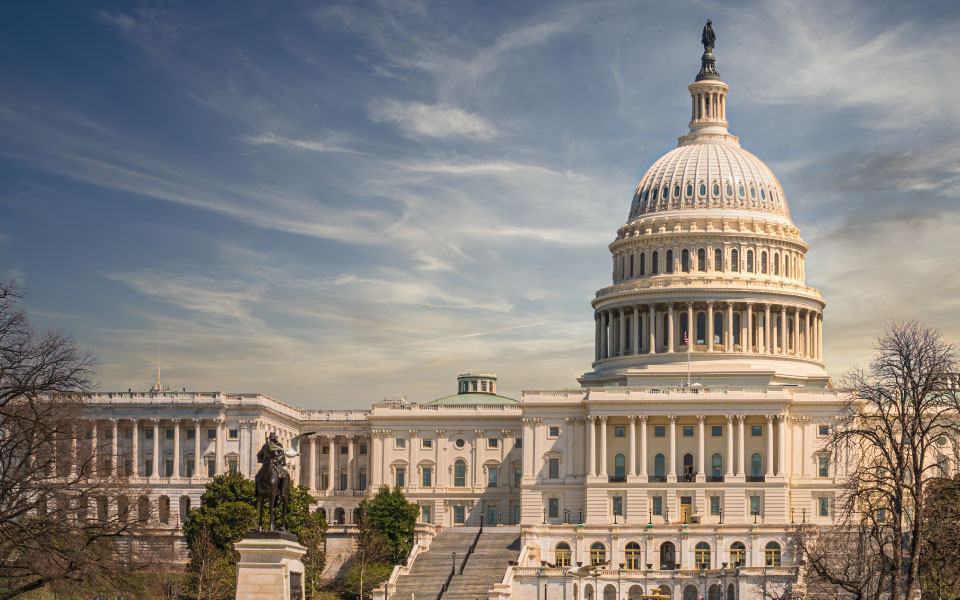Unlock valuable tax planning insights for 2026 and beyond
The One Big Beautiful Bill Act brings much-needed certainty at a time when decision-makers are seeking clarity.
With sweeping reforms now permanent, this year’s tax changes present new opportunities and important considerations.
Explore our 2026 Tax Planning Guide for thoughtful commentary, industry-specific perspectives, and practical strategies that turn complexity into clarity and strategy into savings.

2026 Tax Planning Guide
Unlock valuable tax planning insights for 2026 and beyond.
Our 2026 Tax Planning Guide provides in-depth analysis of new tax rules from the One Big Beautiful Bill Act (OBBBA), new tax provisions, strategic planning tips, and practical recommendations tailored for businesses and individuals.
Download Tax Planning Guide2026 Tax Planning Webinar
As the year draws to a close, now is the perfect time to get ahead of your tax planning for 2026. Join us for the CBIZ 2026 Tax Planning Webinar, where our experts will discuss crucial developments that could impact your business and personal finances.
Topics
- Strategies for navigating changing tariff regulations and their tax implications
- Tax planning associated with the One Big Beautiful Bill Act
- Practical tips for maximizing year-end tax savings

Insights that matter for navigating tax complexity.
Tax Considerations for Businesses
Dubbed the “Big Three,” the domestic research and experimental (R&E) deduction, bonus depreciation, and relaxed business interest limitation — all Tax Cuts and Jobs Act (TCJA) measures that recently expired — were renewed and made permanent by the OBBBA. Several other provisions set to expire were extended or made permanent.
Taxpayers with domestic R&E expenses incurred after Dec. 31, 2021, and before Jan. 1, 2025, can accelerate the remaining deductions over a one- or two-year period.
INSIGHTS
Taxpayers should review their specific tax situations to determine which option may produce the best result. For example, deducting expenses in the year incurred may not generate the best tax result if it generates excess business losses under IRC section 461(l). Taxpayers also should be aware that the IRS has introduced significant changes to Form 6765, reshaping R&E tax credit reporting.
RESOURCE
The 2025 Impact of OBBBA legislation and New Filing Form 6765 Guidelines
TAX GUIDE
The OBBBA makes the first-year bonus depreciation provisions of section 168(k) permanent. The allowance is increased to 100% for property acquired and placed in service after Jan. 19, 2025.
INSIGHTS
The value of bonus depreciation varies by state depending on its conformity to federal tax rules. Understanding a particular state’s treatment is critical for your business.
RESOURCE
Cost Segregation & Bonus Depreciation Benefits Under the OBBBA
TAX GUIDE
The business interest limitation, enacted under IRC section 163(j), restricts how much business interest expense a company can deduct in a tax year. Under the OBBBA, capital-intensive businesses that depend on debt to finance operations and growth can deduct a greater portion of their interest expense. The OBBBA reinstates the section 163(j) interest deduction limitation using a calculation of income that excludes the deduction for depreciation, amortization, or depletion.
INSIGHTS
Businesses that invest heavily in machinery and fixed assets no longer have to balance the interest limitation with bonus depreciation, since depreciation no longer worsens the amount of deductible interest expense.
TAX GUIDE
Manufacturers are now eligible for a 100% deduction on the cost of new “qualified production property,” or QPP, which includes certain real property used directly in manufacturing, production, or refining activities that create or substantially transform a qualified product.
INSIGHTS
Under the new law, manufacturers can take advantage of both a 100% deduction for QPP and bonus depreciation, with each applying to different types of assets. For instance, the QPP deduction may be used for qualifying real property, while bonus depreciation applies to equipment purchases. In addition, the expanded section 179 deduction is available for certain assets that aren’t eligible for bonus depreciation.
RESOURCE
What Does the Big Beautiful Bill Mean for Consumer Products Companies and Manufacturers?
TAX GUIDE
Established by the TCJA as a temporary measure meant to spur investment in distressed and low-income communities, Qualified Opportunity Zones (QOZ) receive a new lease on life with a new permanent extension through a rolling 10-year designation period beginning Jan. 1, 2027.
RESOURCE
Real Estate Investors: Key Changes to Opportunity Zones Under OBBBA
TAX GUIDE
Tax Considerations for Individuals
OBBBA makes the regular income tax rate schedules under section 1 permanent for individuals as enacted by the TCJA, which generally modifies the indexing for inflation for bracket thresholds by providing one additional year of inflation in the cost-of-living adjustment (COLA). The COLA for regular income tax brackets for 2026 is generally the percentage by which the chained CPI for 2025 exceeds the chained CPI for 2016. The result is that the bracket thresholds are larger than they would otherwise be without the additional year of inflation. These changes both cement current tax rate brackets and provide a more favorable COLA for tax year 2025 and future years. The legislation also provides inflation adjustments for the 10% and 12% brackets.
TAX GUIDE
The OBBBA makes the temporary increases to the standard deduction permanent as enacted under section 63 of the TCJA and modifies the inflation indexing of the standard deduction by adding one additional year of inflation in the COLA starting in taxable years beginning after Dec. 31, 2025. It also increases the amount of the standard deduction in taxable years beginning after 2025. Starting in 2025, the standard deduction will increase to $15,750 for individual filers and $31,500 for joint filers, which are adjusted for inflation.
TAX GUIDE
Tip Income: The OBBBA allows an above-the-line deduction for up to $25,000 in tip income with phaseout amounts beginning at $150,000 ($300,000 married filing jointly) for tax years 2025 through 2028. This applies to both employees and independent contractors in industries that customarily receive this income. The Treasury has provided a list of 70 eligible industries.
Overtime Pay: For tax years 2025 through 2028, there’s a new deduction for qualified overtime pay (defined by reference to section 7 of the Fair Labor Standards Act) of up to $12,500 ($25,000 for married filing joint filers). The deduction phases out starting at AGI of $150,000 ($300,000 for married filing joint filers).
TAX GUIDE
Changes to the Qualified Small Business Stock (QSBS) tax exclusion reward founders, employees, and external investors with significant tax savings on capital gains from the sale of eligible stock.
TAX GUIDE
The per-issuer cumulative exclusion limitation increases from $10 million to $15 million, with an annual inflation adjustment increase. Taxpayers who fully use the limitation as inflation adjusted in any tax year are not eligible for additional inflation adjustments. The conforming amendments ensure married filing separate taxpayers benefit from the adjusted inflation limitations on a per-issuer basis. In addition, OBBBA increases the “aggregate gross asset” calculation under IRC Section 1202(d) to $75 million from $50 million, that is also subject to an annual inflation adjustment.
These changes only apply to stock originally issued after the date of enactment. The gain excluded under the three- and four-year rules isn’t treated as a preference item for purposes of the AMT if the stock were acquired after Sept. 27, 2010. Any gain not excluded is taxed at 28%, instead of the long-term capital gains rates.

















